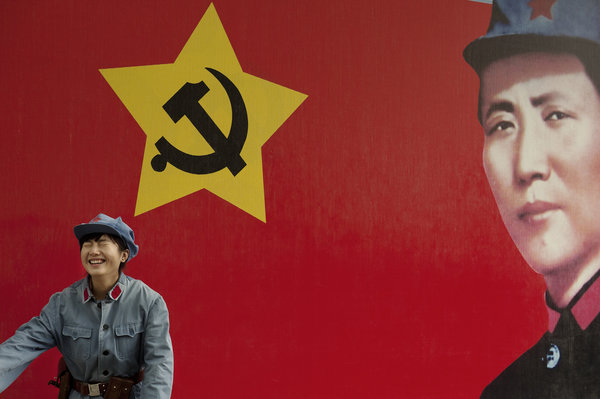 Under a new program, artists would be sent to rural communities or revolutionary sites to absorb socialist values. In Yan’an, the Communist base where Mao Zedong delivered his talks on the arts in 1942, a tourist in Red Army garb has her photo taken in front of an image of Mao.GILLES SABRIE FOR THE NEW YORK TIMES
Under a new program, artists would be sent to rural communities or revolutionary sites to absorb socialist values. In Yan’an, the Communist base where Mao Zedong delivered his talks on the arts in 1942, a tourist in Red Army garb has her photo taken in front of an image of Mao.GILLES SABRIE FOR THE NEW YORK TIMES
By AMY QIN
DECEMBER 2, 2014
In a project that echoes the Cultural Revolution, China’s top film and television industry regulator has announced a new program to send artists to grass-roots communities to learn from the masses and form a “correct view on art.”
The announcement on Monday came less than two months after President Xi Jinping delivered a major speech on the arts, widely called one of the most important statements on art and literature by a Chinese leader since the Yan’an Talks in 1942 by Mao Zedong.
In his October speech, Mr. Xi implored artists not to be “slaves” of the market or to “lose themselves in the tide of market economy or go astray while answering the question of whom to serve.” Since then, many in China’s creative industries have been waiting to see how Mr. Xi’s ideas would be implemented.
The announcement by the State Administration of Press, Publication, Radio, Film and Television appears to be an attempt to rehabilitate artists who in Mr. Xi’s view have gone “astray.” One part of the program, the announcement said, will embed film and television production teams in rural areas for at least 30 days to experience local life.
With this program, artists can “unearth new subjects, find their market and promote fine works within the passionate lives of the people,” the announcement said.
In a separate provision, the scriptwriters, directors, actors and others working on 10 designated films and television shows will also be sent to live among local communities, the announcement said. And every year, 100 staff members from central and local arts programs will travel to border and ethnic minority regions, as well as areas that are significant to China’s revolutionary past.
